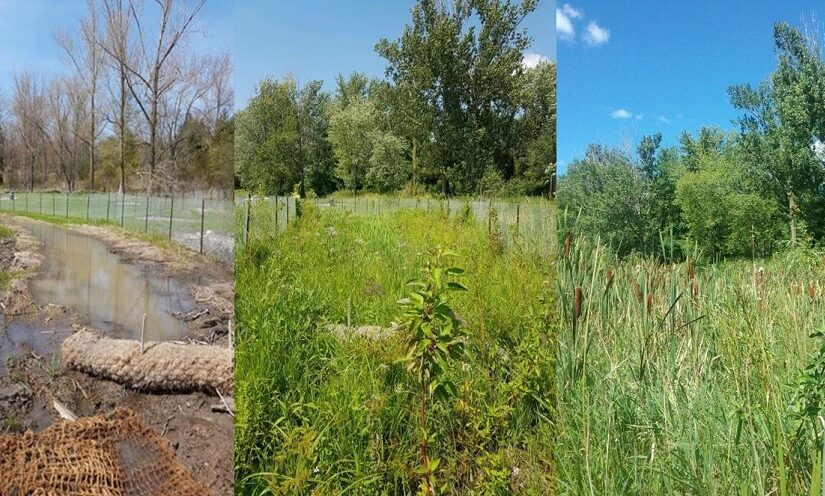In today’s post, Zone Ecologist Corina Brdar shares the exciting restoration story that’s been unfolding at Darlington Provincial Park.
There’s nothing like seeing an idea turn into reality, is there?
Especially when the idea is an enormous one, and it takes tons of cooperation from all kinds of players.
If you visit Darlington Provincial Park this year, you might wonder what’s happening at the McLaughlin Day Use area.
Over ten years ago, our friends at Central Lake Ontario Conservation Authority (CLOCA) approached Ontario Parks with a great idea: What if we made McLaughlin Bay a better place for animals like fish, frogs, birds, and the plants they rely on?
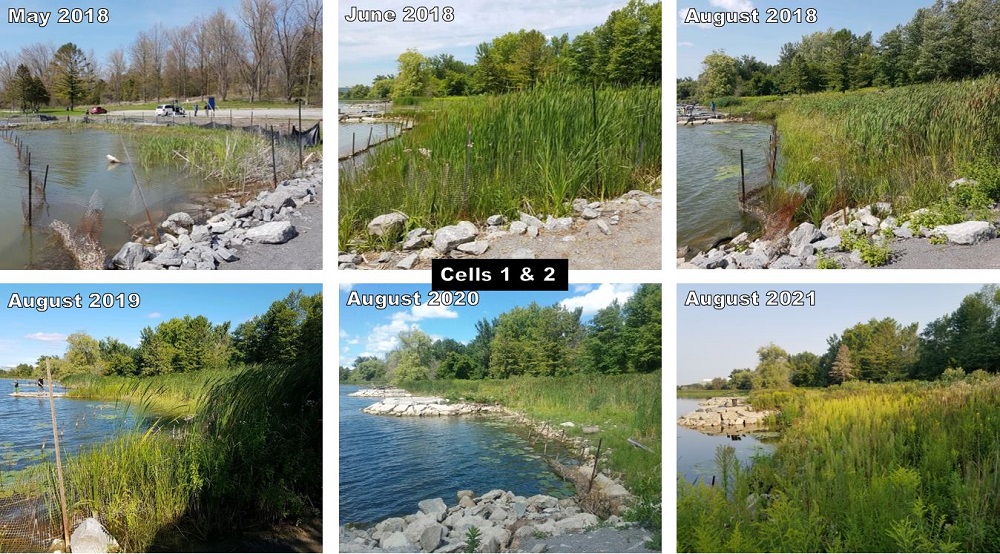
We said “sign us up!”, as did other conservation agencies.
We’re interested in improving the ecological health of all our parks, including smaller parks with a recreation focus like Darlington. This was a chance to cooperate with other groups, to do some habitat restoration, and to improve the day use area for park users.
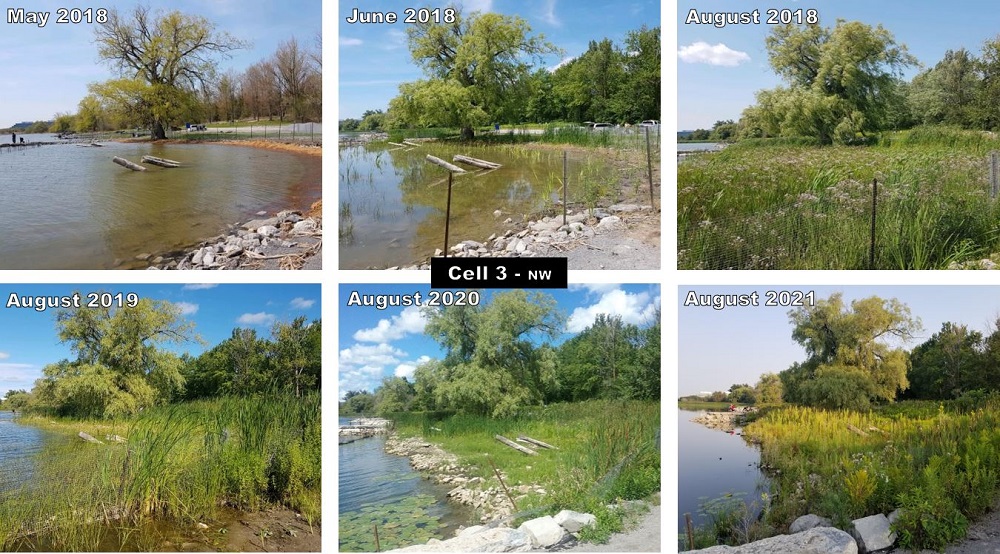
We knew it would take a lot of research, planning, and coordination to do it right, but the project had so much potential and energy from the other partners we knew we were up to the challenge.
So here we are, over 10 years later, with a newly-restored shoreline, more fish habitat, and a better place for park visitors to enjoy the bay.
As any gardener knows, it takes a while for all the plants to take hold and fill in. We continue to monitor the work we’ve done so far and keep making small improvements.
CLOCA and other partners are conducting ongoing scientific research to see if the wildlife give it their stamp of approval. They keep track of water quality, a very important indicator of ecological health in the bay.
We’re hoping that the water in the bay will eventually become clearer and more suitable for the local wildlife.

There are always more improvements that the project team can do to improve the bay, park, and surrounding area, so you may see or hear of new things in the future.
The restoration timeline
Early days
Before the park was established in 1959, the day use area was marshy along the shoreline and old farm fields on the drier land


Our awesome partners and volunteers
Funding came from many sources, including the province of Ontario, the Great Lakes Protection Fund, Environment and Climate Change Canada, and the National Wetland Conservation Fund.
Volunteers helped install 26 fish cribs in the bay. When the water is low, you can sometimes see the tops of the cribs! Waterbirds love to perch and fish from them.
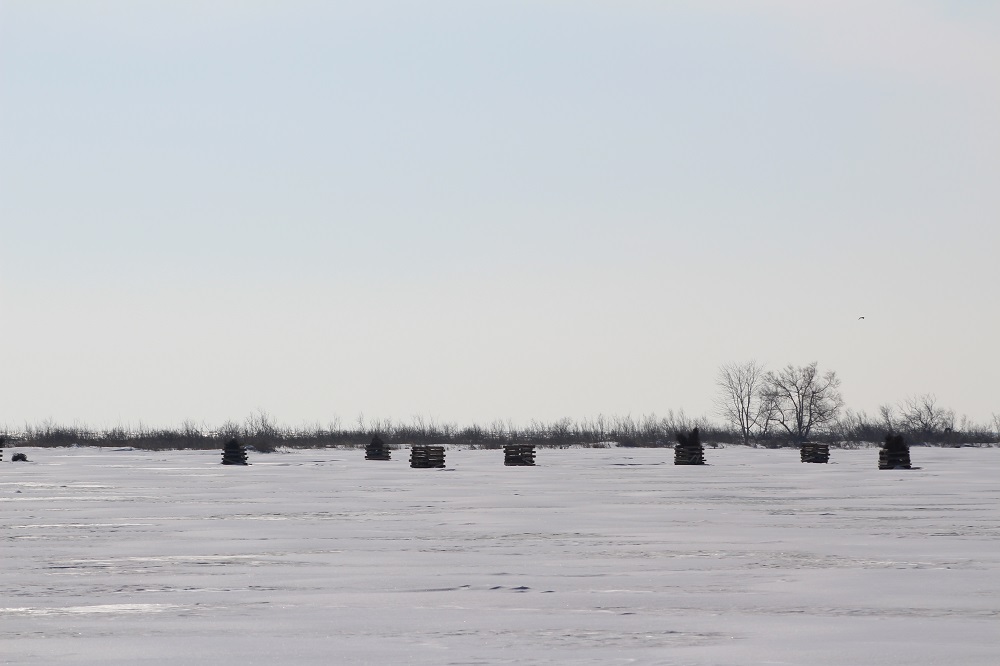
Four fishing nodes were installed to give visitors better fishing access to the deeper parts of the bay.
Staff planted hundreds of native wetland plants and fenced them so they weren’t eaten by hungry carp or geese.

Over time, many plants species including cattail, bugleweed and water lilies have established between the fishing nodes. The carp fencing has been removed from the bay.
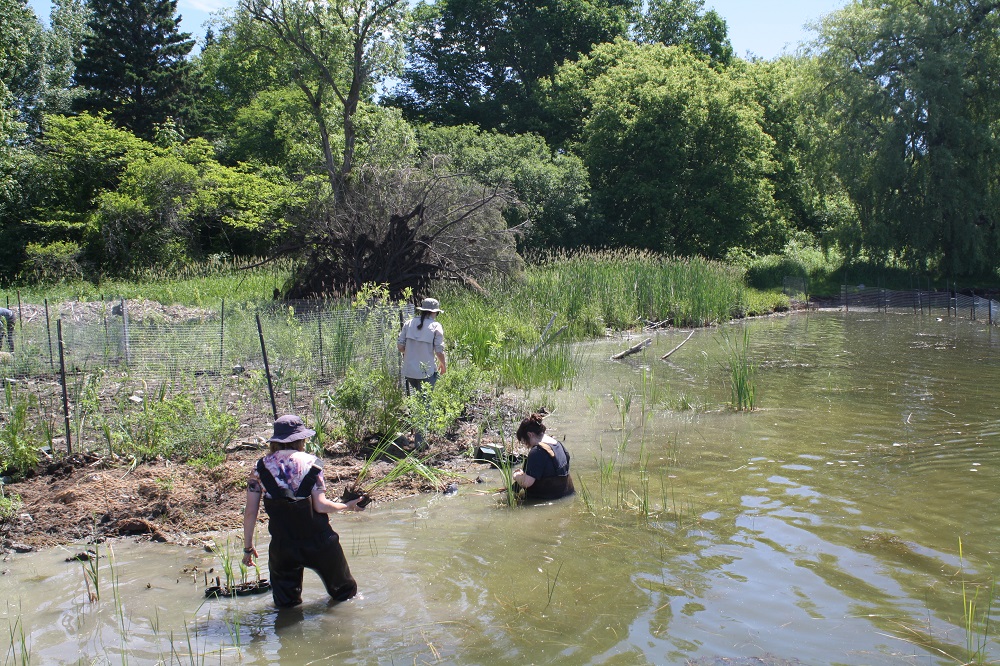
Ongoing research
McLaughlin Bay used to be completely open to Lake Ontario. The sandbar seen now used to be a series of shifting sand spits and small islands. In the past few years, we have also seen record high water levels on Lake Ontario which have changed shoreline features and allowed a natural breach to occur between the bay and the lake.
There are many reasons the bay and its barrier beach have changed, and we used current research to decide the best ways to improve the bay.
Want to learn more about the process? Check out the complete restoration strategy!
Come check out our hard work!
Visit Darlington this fall to see the wonderful conservation efforts. Don’t forget that this year, you can reserve your daily vehicle permit for Darlington up to five days in advance to secure your access!
Please help us keep the park clean and protected by keeping track of your trash and ensuring it is disposed of correctly.
Congratulations to our hard-working staff and all the partners and volunteers who made the transformation possible!
